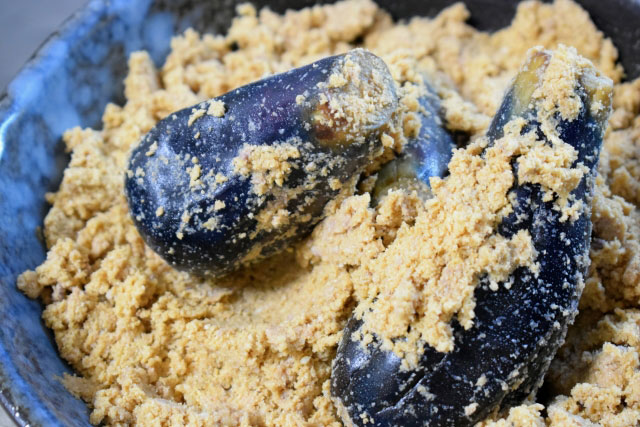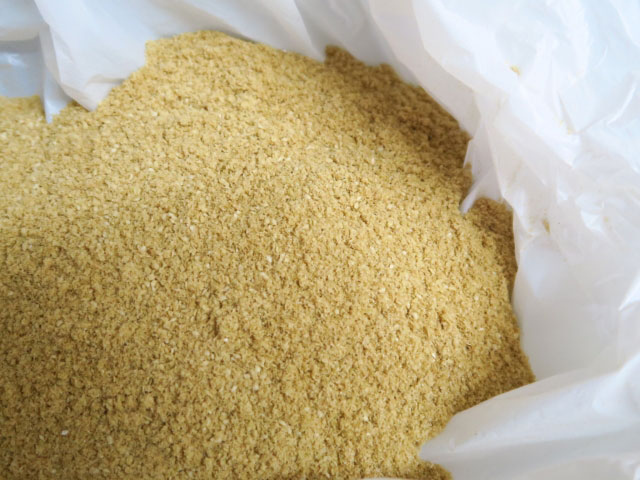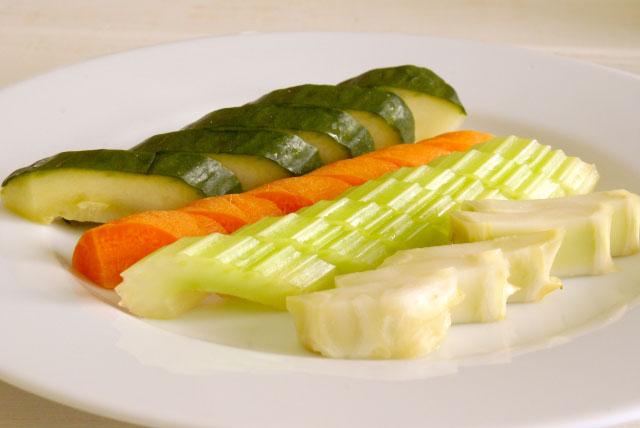
Pickles, pickles, pickles.
They’re a quintessential part of Japanese cuisine, and along with rice it’s always served as a part of the traditional Japanese ichiju sansai meals, which roughly translates “one soup, three dishes.” They’re the sour-tart-sweet-savory tsukemono to accompany a meal. They’re the crunchy side for soft rice, savory fish and warm soup.
The variety of produce used for pickling and the methods for pickling them is astounding! Vegetables like daikon radish, carrots, cucumbers, cabbage and many others are perfectly pickled in soy sauce, vinegar, sake and uniquely, rice bran.
Rice bran pickled vegetables, called nukazuke, are richly flavored pickles that are made using a cultured and fermented rice bran pickling starter called nukadoko. Rice bran pickling is said to have been developed during the 17th century, when machine-milled white rice became the standard. Since milling rice also stripped it of some of its vitamin B content, deficiencies were found among the population often associated with an illness called beriberi. Rice bran pickling was introduced to prevent beriberi and reintroduce thiamine (or Vitamin B1) back into the Japanese diet. Vegetables pickled in a nukadoko absorb thiamine from the rice bran. Today, nukazuke pickles are well-known as providing both thiamine and gut-friendly probiotics. Pickling in this style is similar to making sauerkraut and yogurt, where bacteria ferments the vegetables over the long term.

The nukadoko pickling bed is the most important element to making nukazake pickles. Nukadoko, at its most essential, is a combination of rice bran, salt, kombu, chili peppers, water and vegetable scraps.
Each component of the nukadoko bed serves a purpose. The rice bran serves as the base of the nukadoko. Using fresh, unprocessed rice bran–traditionally obtained at a rice mill–makes the best nukadoko, but in modern kitchens, high-quality rice bran purchased from a grocery store can be an equally good base. Between 13%-15% of high-quality salt, such as sea salt or kosher salt, is added to the rice bran. Kombu seaweed is added to incorporate umami flavors into the mix, and chili peppers are added to prevent molding. Fresh, distilled or filtered water, with any chemicals used to clean the water removed, is added to keep everything moist and alive. Finally, vegetable scraps such as cabbage wedges are added to the mixture to begin the growth of beneficial yeast and lactobacillus bacteria, which then ferments the pickles. The resulting mix resembles wet sand with a few lumps in it!
Once the basic mixture is created, it is cultured in a non-reactive container made of enameled metal, glass or wood between 68°F and 77°F. The pickling starter is aerated by mixing it with clean hands one to two times a day, until it smells clean and slightly sour. At this point, the vegetable scraps are removed and the nukadoko is ready to use for pickling vegetables!

Nukadoko are highly prized and cared for. Some starters are passed down for generations, over decades. Pickling fanatics even take their nukadoko with them when they travel in order to maintain the freshness of the beds! The more cultivated the nukadoko is, the more complex the flavor of the resulting nukazuke pickles. As vegetables are pickled and removed from the nukadoko, the pickling bed is replenished with rice bran, salt, water and seasonings.
Apple and yuzu peels are sometimes added to the nukadoko to infuse sweet and fruity aromas into the pickles. Vegetables such as radishes, carrots, cucumbers and eggplant are delicious when pickled in the nukadoko!
Have you ever tasted nukazuke pickles? What did you think? Be sure to share your favorites with us below!
Leave a Reply